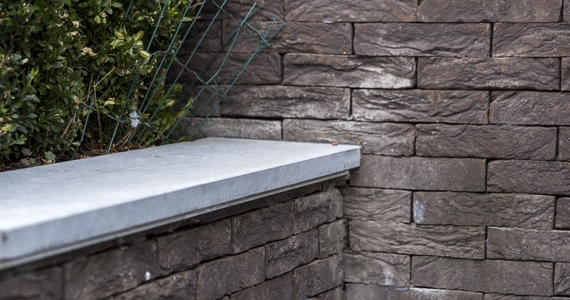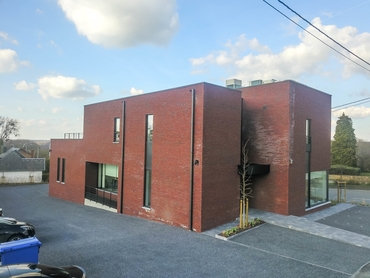Removing efflorescence
Efflorescence is a purely aesthetic problem, but nevertheless a bothersome phenomenon. Removing it is often quite simple. Unfortunately, there are also more persistent types.

3 types of efflorescence
We distinguish three types of efflorescence: salt efflorescence, lime wash out (efflorescence), and gypsum efflorescence. Each variant requires a different type of treatment for removal without damaging the bricks. To find out what type of efflorescence is involved, you can 'taste' the deposit. If it actually tastes like salt, it's a salt efflorescence.
Removing salt efflorescence
Since this form of efflorescence is soluble in water, it is washed away naturally by rain and wind. The efflorescence will therefore gradually dissolve in the rainwater and eventually disappear completely.
You can speed up the process by regularly wetting the affected bricks with lukewarm water (from a garden hose). We do not recommend the use of aggressive cleaning techniques, such as acidic products, pressure washers, and abrasive materials, as such techniques can irreversibly damage the appearance of the brick.
With a wet treatment, you must consider that part of the solution will be drawn back into the bricks and may eventually re-emerge. The efflorescence will reduce gradually, but you will need to repeat the treatment.
For dry removal, brush lightly over the efflorescence with a soft brush. Do not rub with stiff sanding brushes or steel wool, otherwise the sanding will be removed from the brick and a noticeable change in colour may occur compared to the untreated parts of the wall.
Removing lime wash out
A different kind of white residue on the facade is caused by lime. Water-soluble lime particles in the mortar react with rainwater, for example, and are transported to the outside through the mortar, where they cause white hazing on the brick and joints. If this efflorescence is noticed in time, the lime particles can simply be rinsed off. If the efflorescence remains for too long, a chemical conversion will eventually occur, under the influence of CO2, resulting in a residue of calcium carbonate that can only be removed with chemical cleaning agents.

Efflorescence remover
It is possible to use an efflorescence remover (a non-aggressive acid solution), suitable for bricks, to remove the efflorescence. It is important to follow the product's instructions for use carefully. It is advised to first moisten the stones and then apply the product. After applying this product, the surface should be rinsed with plenty of clean water on a regular basis to ensure that no residue of the product remains. Before the entire facade is treated with such a product, we recommend that you always perform a test on a few bricks first. This may not be done with a pressure washer.
Removal of Late Gypsum Efflorescence (LGE)
Late Gypsum Efflorescence (LGE) is the most persistent form of efflorescence. The only remedy is mechanical cleaning. The thin layer of gypsum is then blasted off with a very fine granulate. In doing so, you cannot avoid also removing part of the surface sanding from the brick. The colour can therefore change slightly. To prevent LGE from forming on the facade again, it is necessary to apply Hydrofuge water-repellent to the facade after mechanical cleaning.

